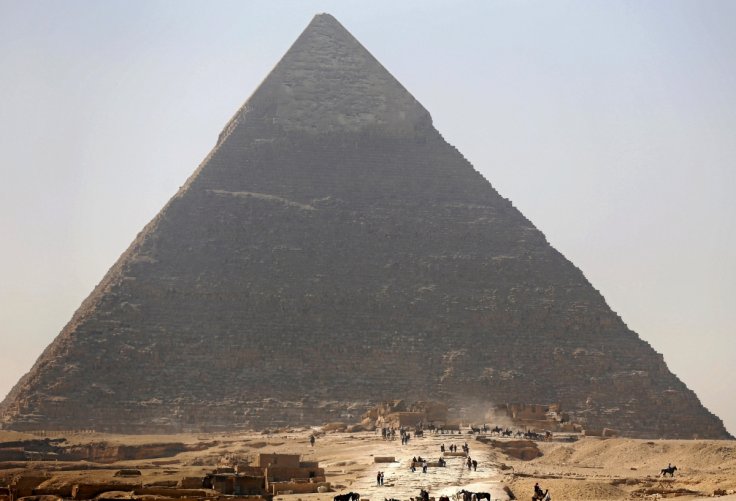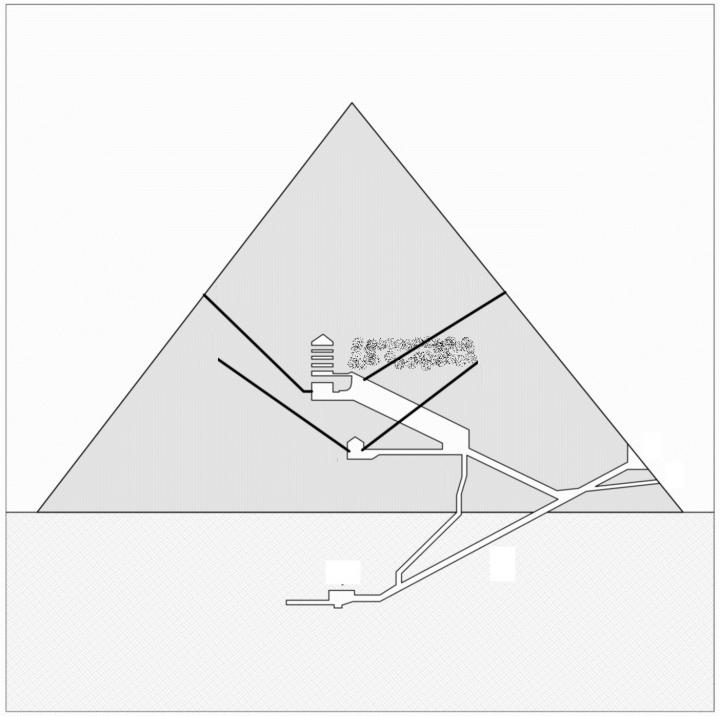
Egypt has always been the land of wonders. From Nefertiti to Cleopatra, from Tutankhamun to Cheops, the sand dunes hold a lot of secrets.
Pyramids have always mesmerized people around the world by their super-impressive engineering. These huge structures are themselves a technological marvel.
Studies on Egypt's pyramids are not new. It has been going on for quite some time and recently, in November 2017, two archaeologists along with their Scan Pyramids Project discovered a huge void, almost 30 meters long inside the Pyramid of Cheops in Giza.
Archaeologists claim that the void houses an iron throne built of otherworldly stone.
Giulio Magli, Director of the Department of Mathematics and Professor of Archaeoastronomy at the Politecnico di Milano, studied the Pyramid Texts and religious writings craved inside the walls of the pyramid, dating back to 2,400 BC.

Analysis of these texts reveal that the Pharaoh's iron throne might have been carved from meteorites. The texts, according to Magli, suggests that Pharaoh Khufu or Cheops' throne lies inside this chamber.
Pyramid texts speak of resurrection
The Great Pyramid has carvings that speak of afterlife. The funerary chamber inside has a gallery. According to the funerary texts carved on the walls, the pharaoh will have to pass through the gates of the sky in order to reach the realm of the stars of the north.
The four narrow shafts discovered in the pyramid represent the "gates of the sky" according to the texts.
"The north one could well lead into the newly discovered room, and may contain an object needed by Cheops after crossing the doors – the 'iron throne" – reads the text.
A reconstruction of the gold-sheet throne of Hetepheres, mother of Khufu,
— giulio magli (@giuliomagli1) November 17, 2017
I am proposing that the void in the Great Pyramid might have been constructed to contain a similar throne, endowed with sheets of (meteoritic) Iron. The complete paper https://t.co/vQuPxcYh71 pic.twitter.com/oOUs0lklAJ
The text also suggests that Cheops' throne is similar to his mother's throne. Queen Hetepheres' throne was made out of gold whereas Cheops' was carved from meteorites. The throne, according to the texts, was made out of iron fallen from the sky.
Egyptians favoured meteoritic iron to produce ornaments and objects used for religious ceremonies. Meteoritic iron has a high nickel content. King Tutankhamun's dagger for that matter was carved from a meteorite as well.
The void in the pyramid is definitely not a failure in construction nor simply a structural feature or reliving chamber, as per the funerary religion of ancient Egypt. According to Magli, the void is a copy of the Great Gallery present in the northern lower shaft, and was built to house a symbolic object or the iron throne.









